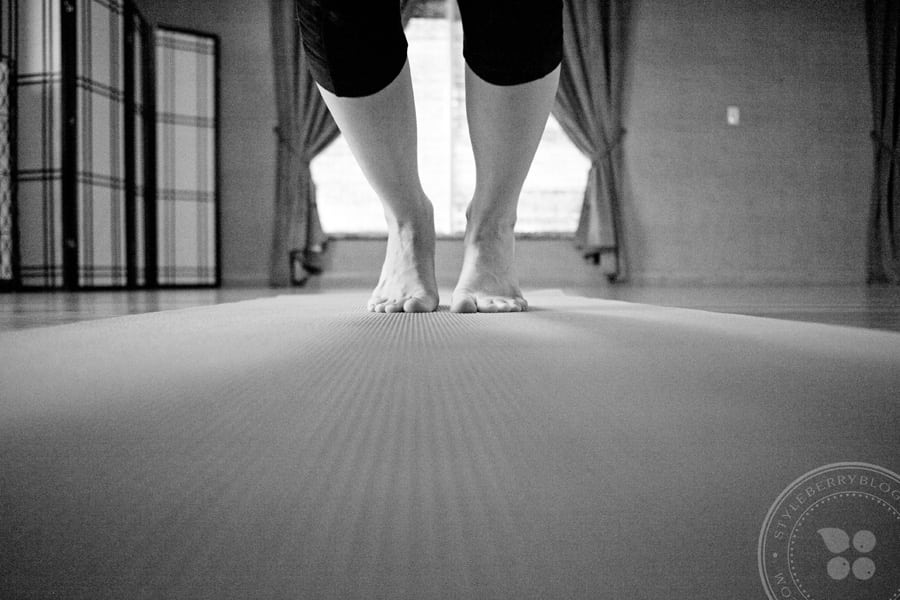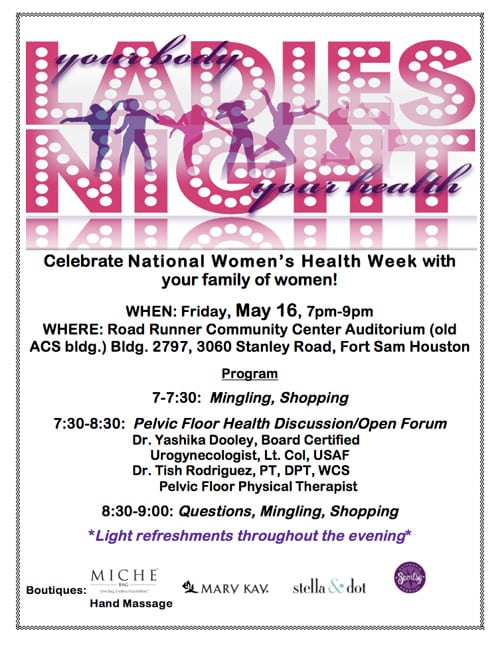I have thought a lot about what I want this article to say. Mostly, I have tried to figure out my point. & I think my goal is simple: to start a conversation. Pelvic Organ Prolapse (or Pelvic Floor Dysfunction, or Pelvic Floor Disorder) is not a topic you’ll see floating around the Internet unless you dig for it. It’s uncomfortable to talk about (for some) and if you are squeamish about medical stuff, then go ahead and just skip it now. I am going to share details that I longed to find discussed by a real person, or even on the internet–and they might make some blush. In our house, we talk about the body a lot. I see a lot of gross textbook pictures laying open on my coffee table. Nothing really fazes me anymore. So here is your warning: this is educational. I am not going to sugar coat stuff!
Pelvic prolapse is, what some will describe as, one of the last hush hush topics in gynecology. Seems like we can now talk freely about most anything with our girlfriends–and we do!!! But I have yet to have an educated conversation with a non-medical professional about a prolapse. And for a problem that affects as many as HALF of women, why is that? It’s not just an “old lady” problem. I’m in my early thirties. I have pelvic prolapse. And I think we need to have a discussion–and more importantly, talk about improving our chances of preventing it! My goal is simply to share my story–because you may have a similar one. I had NO IDEA that the symptoms I have been experiencing (some for years!) were a clue to my path to prolapse. I don’t want any of you to end up like me–formerly clueless, engaging in heavy physical activity, and then sidelined with a serious pelvic floor issue. It’s depressing and frustrating and it did not have to be this way. So let me tell you my story.

If you follow this blog, you know I have had two deliveries. Both were quick, once they got going. Both were tough on my body, for different reasons. I recovered from both slowly, gently. I never jumped right back into exercise, but I did get there eventually. After my first delivery, I had some incontinence issues, but nothing so bothersome, that I sought treatment. Back then, I was crossfitting in my own way, and my “should have seen it” clues were in my jumps. Burpees, Box Jumps, Jump Rope. All equaled leakage–but I thought, eh, consequence of having a baby. There is nothing I can do about it & I want another baby, so I’ll put it off until I “have my body back” for good. Mistake #1!! You can ALWAYS work on strengthening your pelvic floor–and this helps with incontinence!!
My second pregnancy came with a lot more discomfort than my first. I had some vaginal vein issues and my discomfort made me get off my feet for the first time in my life. It was not fun, and I assumed it would go away after delivery. Most of it did, but some of it did not. My second delivery was fast & furious, and while it was exactly what I wanted, it was really the start of this whole thing. At least that is what I think.
Fast forward about a year, and I got back into a regular and rigorous workout routine. I would do my yoga (like, drip sweat on your mat because it’s so hard yoga) twice a week. Then on Saturday I would lift really heavy (like out-lift most of the dudes in my class, heavy). It was mentally freeing. I take great pleasure and pride in getting and being strong. I feel best about myself when I am strong. Lifting myself and other heavy stuff is essential for my well-being, but it was damaging my body–not because I was doing it, but because of the way I was doing it. I went on, not knowing there was a problem for nearly a year. Until one day…something was different.
I had done two heavy barbell classes in a row. One Saturday we’d done some PR (personal record) lifting. I had my instructor help lift and rack my weight because I couldn’t rack it myself–that’s how heavy I’d gone. We did tons of squats. Tons of lunges. All really heavy, until failure. After unwinding in yoga on M/W, I went back for more. We lifted heavy again, but this time it was heavy deadlifts. We had to have done over a hundred deadlifts that day. I completed the class. Felt great. Then the next morning, I felt IT.
I felt like I had a tampon that was falling out. I did my own physical exam and wouldn’t you know–my cervix was like…right there. I used to have to work really hard to check my mirena threads in my cervix. You know, squat in the shower to reach them. Now it was like, RIGHT THERE–what was happening?!! I freaked out (something I normally don’t do) and consulted with my husband, who said I was likely experiencing prolapse. So I googled it (because I had no idea what that was!) & then I really lost it. This pretty much explains it.
I saw my Gynecologist (who happens to be a pelvic floor specialist!!) and she confirmed with some measurements, that I had exactly what I thought I did. Except it was not only a uterine prolapse, everything was moving south. There were words like hysterectomy and pelvic sling and pessary on the table. Whaaat?? I am healthy. I take care of myself. I exercise. What went wrong? What happened here?
& the answer was simple: I neglected to strengthen my pelvic floor. & then I repeatedly did several exercises that are known to significantly increase pressure on the pelvic floor. & I did them with heavy weight on my back. So therein lies my recipe for disaster! No pelvic floor muscles + lots of intra-abdominal pressure = everything falls down. And this can happen to ANYONE, regardless of how they treat their body. While prolapse cannot be reversed (without surgery) you can sometimes improve the symptoms by strengthening the pelvic floor.
So I was referred to an amazing Pelvic Floor Physical Therapist (can you believe there is such a thing??) and learned a whole lot about my body. & I want to share some of that with you. Let’s start with the symptoms, because maybe you can relate.
My Prolapse “Clues”
- Posture: I noticed that after carrying Everett, my belly always stuck out a little more than my bust. This was not the case with Caroline. What I learned was that I had such weak abdominals (despite my exercise–I had been totally overcompensating with the other muscles!), that I was still carrying my body like I was pregnant–sticking out my bum a bit & rolling my hips toward the ground, slightly bearing down at all times. Try standing in the typical “hands on my back because I am so pregnant” stance–are you still doing this after delivery?? Time to strengthen those transverse abdominals!
- Bearing down: like you have to “push.” I was constantly bearing down–to lift, to walk, to breathe, to cough, to bathe my kids. This is a major sign of a weak pelvic floor.
- Breathing: I was a belly breather. I did not engage my diaphragm much. I would breathe down, not up into my diaphragm.
- Bracing to get out of a chair: My quads were very strong, but my hamstrings were weak and I couldn’t even get out of a chair without using my arm strength. Try sitting on a firm chair & without any assistance, using your legs to get up. Can you? I am still working at this. I know it sounds ridiculous, but it was another red flag that I am still working hard to correct.
- Incontinence: Inability to stop urinary flow. Always feel like you have to go to the bathroom. Leak, even after you think you have stopped the flow or urine. Trampolines & treadmills=bad news.
- Vagina “Farts”: are you laughing yet? This one is soooo embarrassing. I googled this for so many years, and NONE of the sites I found ever came up with prolapse as an explanation. So as mortifying as it is, let’s talk about it. So you’re in yoga. You go into down dog. You lift your leg to three legged dog, and then curl it into scorpion and then as you head back up, & back to mountain, OMG. Noise!! MORTIFYING. Well. If you have a prolapse, this is what happened: your uterus slipped from its prolapse into normal position while you were inverted, and created an awesome vacuum. Then, as you returned to your upright position, your uterus fell back down (thanks, gravity!!) and shoved all the extra air you accumulated right on down with it. & out it went. So there you have it, my four year long mystery, solved. Does this happen to anyone else?? No one ever talks about it, so maybe I am a minority? It was a very real problem for me–and actually kept me away from yoga for a time.
- Low, painful periods: After Everett, I had increasingly painful periods. Some of this is surely related to my endometriosis, but some of it was new because of the location of cramping. My periods were not painful in my abdomen anymore–they were painful much, much lower. As painful as those vaginal varicose veins during pregnancy. Makes sense, now that I know that my uterus is so much lower than it should be.
So then what? What happens if you do have prolapse? Is there any hope for improvement?
Let me encourage you–yes!! There is a lot of wishy washy info out there on google searches. I am currently going to Pelvic PT, where I have my progress & strength monitored under untrasound, so I can see just how to do things like kegels and the other strength exercises. I can tell you that in the last couple of months since I started Pelvic PT I have seen a major improvement in how I carry my body. I am still symptomatic, but I do my PT exercises every single day & I am adding in more yoga as the weeks pass & I can hold the poses while engaging my pelvic floor/abdomen correctly. This is a skill that has to be acquired & practiced, & my PT has helped me identify how to fire the muscles correctly. It is also encouraging to see, under ultrasound, how much more control I have over these muscles–and that I can actually fire them now. I could not even see my kegel on ultrasound when I started–that’s how weak mine was. I have also done vaginal e-stim–which is quite a strange experience. But it works! I am learning how to control the muscles that have completely lost function. There is so much work that can be done to improve the function of the pelvic floor muscles, but I will emphasize “work.” It takes dedication!
 Is there a treatment? What are you doing long term?
Is there a treatment? What are you doing long term?
I am still at the beginning of treating my prolapse. I am in no rush for a hysterectomy, though I am sure it is in my future. We are learning more about my body as the treatment goes on–and how much of my problem is muscle weakness vs. ligament damage. Ligament damage (which is a result of both pregnancy and childbirth) cannot be reversed. Ligament damage is permanent & I did have two significant tears with my deliveries, so there’s likely some damage. However, the muscle improvement is ongoing, and will never be considered done. Like any other muscles, I will need to work on them the rest of my life. Even after a hysterectomy, a woman needs a strong pelvic floor. No surgery can strengthen my muscles–so I will exercise them regularly!
I am also using a pessary, which has been great! My doctor calls them a “bra for your vagina” and that’s exactly what it is! It is a soft silicone device that you insert like a diaphragm. It comes in a bunch of shapes & sizes; yours is determined by your doctor during a fitting, based on your anatomical needs. It is tricky to get out sometimes, but after a while you get the hang of it.
I have to say, the idea of using a pessary made me really sad for a long time. I thought about how much of a pain it would be to take it in & out every day. Was this my new normal? I need something to hold my insides up? I am too young for this!! & I was sweaty and in tears one night, at the beginning, when it got stuck. I swore I would never get it out. But I did. & you know–the internet has no tips for getting a pessary in & out. So while we’re talking about everything uncomfortable in this article, I will share that I’ve found it is easiest to remove in the shower (relaxed!!), standing. Squatting does not work for me. At all. I cannot get it in well sitting down, either; standing is best. It is so awkward at first, but for anyone who may be seeking encouragement here, you get the angles down eventually and it does become second nature. It isn’t ever “comfortable” but it gets easier. Just experiment with new angles until you find one that makes it easy.
The best part of the pessary? It works!!! I can’t feel it when it’s in. It relieves my symptoms (most of the incontinence too!) and I can even breeze right through that three legged dog hip opener–SILENTLY. That may be the greatest achievement of all. :) Yoga, with no noises! WINNER!
Exercise in the future is still up in the air. Many experts will tell women who have been diagnosed with prolapse that their exercise routine should include only exercises where you can keep at least one foot on the ground at all times. This means zero impact exercises. No running, no jumping. Nada. I can tell you that I will probably never be comfortable running again–just because I do fear making my prolapse worse and being forced to have surgery. Weights is something that will get introduced back into my regime over time. I don’t think I will ever lift as heavy as I used to, but with the right form & being really mindful of those pelvic floor muscles, I hope to get to a place where I can include at least light lifting again. For now, I am going to continue my yoga practice. I’ve bumped that to three times a week and hope to add even more. There is so much strength that can be gained from moving your own body around. & bonus, a new study even comments on the pelvic floor benefits of yoga. But as I have learned, you have to know how to properly engage your pelvic floor muscles or you could be doing it all wrong!!
So what can I do? What do I do??
If you show no signs of a prolapse and are looking to prevent it in the future, work on your kegels & pelvic floor strength! My doctors have always checked the strength of my kegel at my annual–which is a great place to start. Don’t ignore their advice, like I did!! squeeze, squeeze, squeeze. See if there are any local PTs that offer informational seminars in your area. There are also a bunch of resources on YouTube! Do an exercise search. Here is a search for pelvic floor exercises for women.
If you suspect something is up, see your gynecologist. Seek treatment from a specialist. I would find a Urogynecologist, board certified in Female Pelvic Medicine and Reconstructive Surgery. Bonus if they are affiliated with a Pelvic Floor Physical Therapist. If I had the chance to rewind to right after Caroline’s birth, I would have sought the help of a Women’s Health Physical Therapist immediately. I think their work is incredibly valuable. Don’t put it off–seek expert help ASAP. & make sure they examine you standing up. This is important–as everything can move back when you are laying down!
Additionally, if you happen to live in San Antonio, lucky you!! My doctor and my Pelvic Physical Therapist are putting on a fun evening program this Friday night, open to the public, to discuss all things related to Pelvic Floor Health. This is an amazing opportunity to learn more from the experts. I cannot even begin to say enough good things about Dr. Dooley and Dr. Rodriguez. Go & learn from them! Ask your questions! They will have a q&a box if you are too uncomfortable to ask your questions in front of everyone. It is open to the public, not just military, even though it is on Ft. Sam Houston. Seriously, take advantage of this opportunity!

I have read the internet up, down and sideways. Here is a collection of the articles about the Pelvic Floor that you may find particularly useful. :)
IMPORTANT RESOURCES:
- Find a nearby Urogynecologist HERE
- Find a Women’s Health/Pelvic Floor Physical Therapist HERE
- Take the Floor, The American Urogynecologic Society non-profit organization that supports all things PFD HERE
- The best article I found on Lifting Weights & Prolapse HERE
- A random source, but excellent overview of prolapse & symptoms & therapy HERE
- 12 Unsafe Abdominal Exercises for Prolapse HERE
- Pelvic Exercises (& a really great Pelvic Floor info website!!) HERE
- 7 Yoga Poses, safe for your pelvic floor HERE
- My favorite Pelvic Health Blog HERE
Did you make it this far? Holy smokes. That was more than I thought I would write. If you have anything more you wish to add, as always, let’s make this article a resource for women who may stumble upon it on a freaked-out google search. I’d love to hear how you’ve handled a diagnosis or what you are doing to rehab. Or even if you are part of the noisy yogis club. HAhaha. No, really. It’s not funny. But it is. Sort of. Not laughing about it yet? Maybe you need a pessary! ;)





